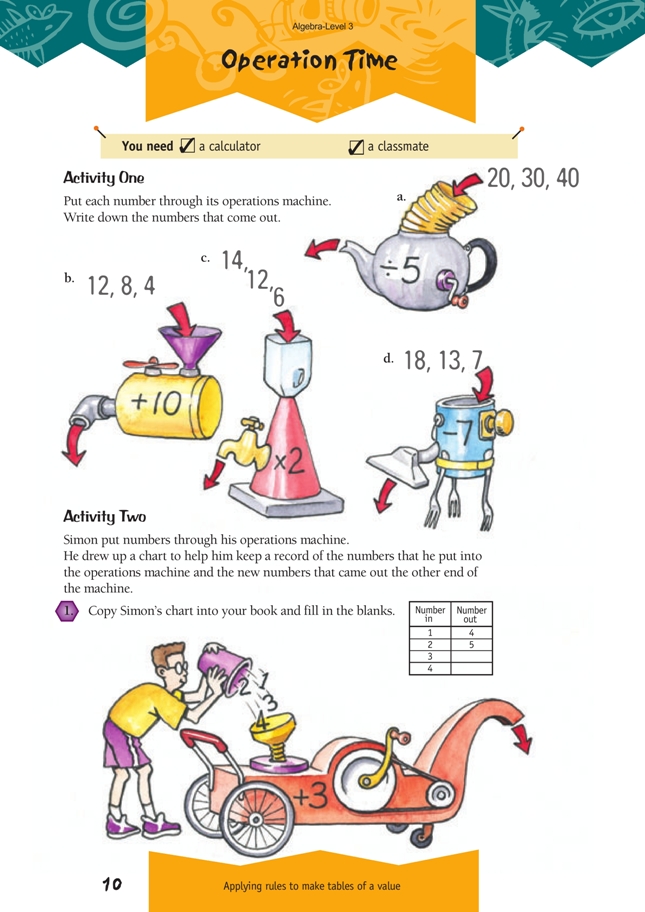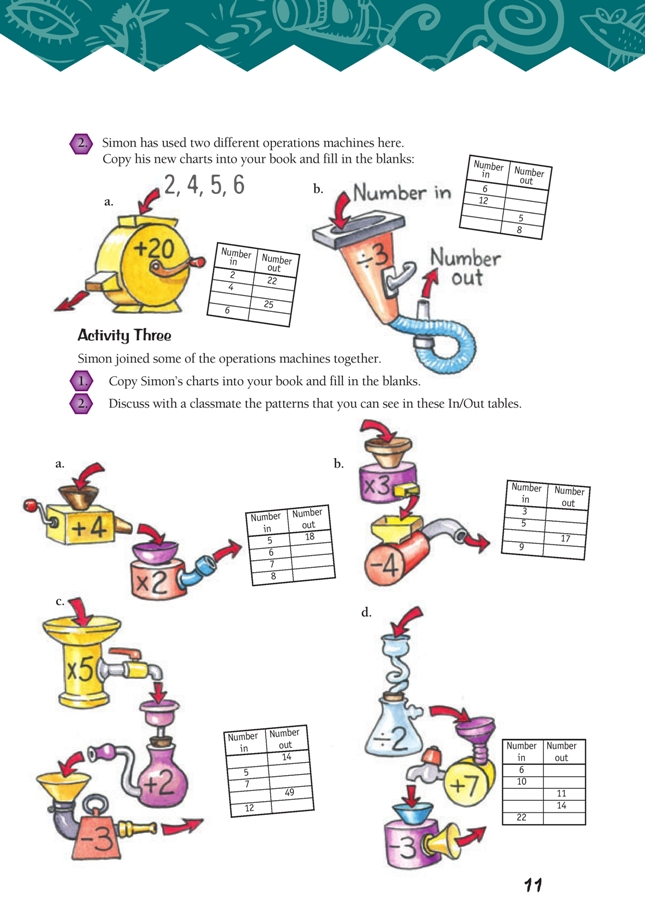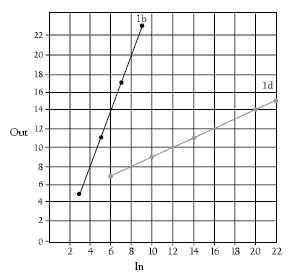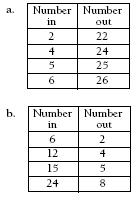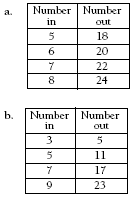This is a level 3 algebra strand activity from the Figure It Out series.
A PDF of the student activity is included.
Click on the image to enlarge it. Click again to close. Download PDF (405 KB)
use tables to connect members of a sequential pattern
FIO, Level 3, Algebra, Operation Time, pages 10-11
classmate
Activity One
Arranging the answers in tables will help students to order the results and identify any patterns. This will be useful practice for the more complex operations machines in the later activities provided on these two pages. For example:
a.
There is a difference of 10 between the consecutive “in” numbers and a difference of two between the consecutive “out” numbers. The out numbers are five times less than the in numbers (or the in numbers are five times more than the out numbers).
b.
There is a difference of four between consecutive in numbers and consecutive out numbers. Because the differences are consistent, addition or subtraction must have been used rather than multiplication or division. The out number is 10 more than the in number.
A useful exercise would be to have students graph the results. This would help them to develop the important concept of relation: how the value of one variable (the number on the left) maps onto the value of another variable (the number on the right).
See Answers and Teachers’ Notes: Algebra, Figure It Out, Levels 2–3, page 14.
Activities Two and Three
To answer these questions, students will need to use their basic facts knowledge that addition and subtraction are inverse operations and that multiplication and division are inverse operations. For example, when they are given the in number for Activity Two, question 2b, the operations machine tells them to divide it by three to get the out number. But when they are given the out number, they need to use the reverse operation, that is, multiplication, to get the in number. This becomes more complex in Activity Three, when students need to reverse two or three operations.
For example, when they are given the out number in question 1d, they need to add three, subtract seven, and then multiply by two to get the in number. Some students may notice that they can combine the + 7 – 3 part of the machine to get + 4 (or – 4 when doing the reverse). In other words, inverse operations cancel each other out to a certain extent.
Encourage students to use the skills practised in Activity One to check their answers and look for patterns. For example, if the in numbers increase by a consistent amount, the out numbers should also increase by a consistent amount. They could also check their answers by graphing their results. If their results are correct, the plotted graph should form a straight line. This is because the relation between the in and the out numbers is always the same. Alternatively, students could use graphs to
find the missing values in the In/Out tables. For example, the following graph shows 1b (Number in x 3 – 4) and 1d (Number out ÷ 2 + 7 – 3):
Answers to Activities
Activity One
(The number closest to the arrow goes through first.)
a. 4, 6, 8
b. 14, 18, 22
c. 12, 24, 28
d. 0, 6, 11
Activity Two
1.
2.
Activity Three
1.
2. Answers will vary.
